Results 1 to 10 of 36
Thread: Does anyone recognize this hone?
-
01-03-2019, 07:05 PM #1
 Does anyone recognize this hone?
Does anyone recognize this hone?
Back in the seventies when I was a kid my dad bought a sharpening business. It was primarily for saws, belsaw machines, a carbide sharpener etc but one of the things included in it was this hone which is in a cheese box. It's 10 3/4" long, 3 3/4" across the face and 3 1/4" tall. you'll kindly have to pardon my illiteracy about hones. I'm assuming, I think correctly, that the sides, which are bluish in color (2nd picture), are not actually sharpening surfaces just a substrate. He told my brother and I at the time not to use that to sharpen knives or other blades because it was made for sharpening razors but I never really knew anything beyond what he said.
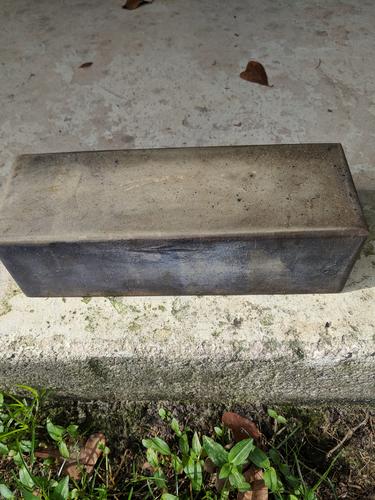
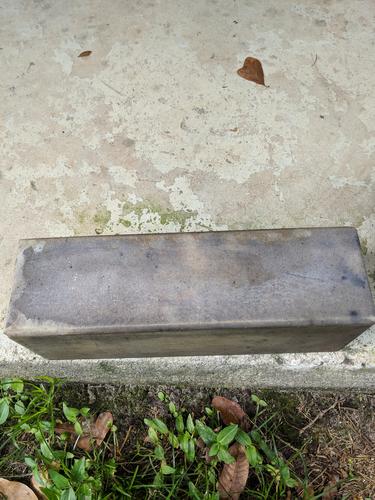
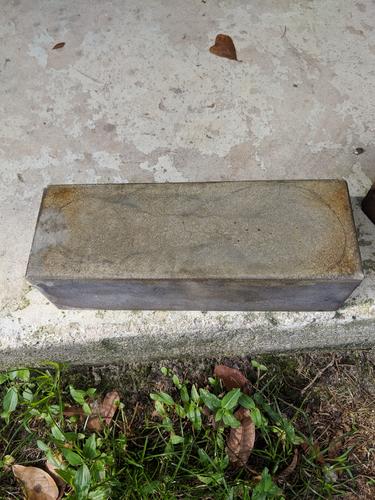
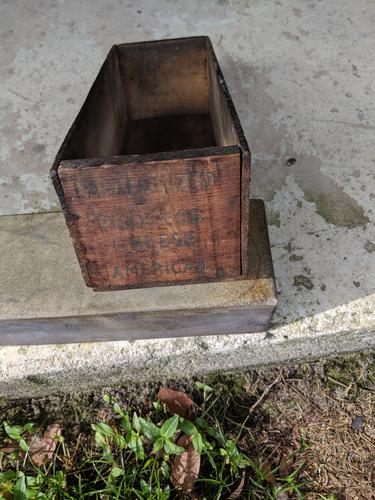
Again pardon my ignorance but it appears to be the same on both cutting surfaces but I'm not certain. I'm assuming, based on the little I know about stones and it's age, that it's probably an oil stone. I'm also assuming that it's a man-made stone because of the fact that it seems like it has a different substrate in the middle than on the top and bottom side plus it looks somewhat like poured concrete. Any help with information on it would be appreciated. Thanks in advance for any help.
Paul.
-
01-03-2019, 07:27 PM #2

I cant help but i love looking at old stones. That thing looks like a concrete brick! I will be watching to see what it is.
It's just Sharpening, right?
Jerry...
-
01-03-2019, 08:11 PM #3Senior Member


- Join Date
- May 2014
- Location
- Bryan, TX
- Posts
- 1,251
Thanked: 228
Me too! Watching!
-
01-03-2019, 08:20 PM #4Senior Member

- Join Date
- Sep 2018
- Location
- Palm Harbor Fl
- Posts
- 377
Thanked: 49
I would take a shaving razor and give it a whirl. See what it does. Compare scratch patterns with known grit stones and try to get an idea what it may be capable of doing.
-
01-04-2019, 02:18 AM #5

I've actually run a razor across it some. I don't have a microscope or even a jeweler's glass to see it up close but it left the edge rather shiny like it looks after the pyramid progression or after the 12k stone. Again, I am quite new to honing and only really know how to follow directions from what I've read.
-
01-04-2019, 02:57 AM #6Senior Member

- Join Date
- Jan 2019
- Location
- north florida
- Posts
- 125
Thanked: 10
paul scrub it maybe, soak it with some simple green so we can see its true colors....
it will prolly need some lapping to get to really sing
....now i have hone envy
it looks like it is a white-ish hone.... which might it narrow down
-
01-04-2019, 03:21 AM #7
-
01-04-2019, 04:14 AM #8Senior Member

- Join Date
- Jan 2019
- Location
- north florida
- Posts
- 125
Thanked: 10
My very very wild guess is its some kind of ark. i have a #1 norton washita that has similar look which and would fit type of business
-
01-05-2019, 01:34 AM #9

UPDATE:
Okay, so I did The Simple Green cleaning. Scrubbed it with a brush and The Simple Green which did clean some dirty looking stuff off of it but didn't seem to change it's appearance very much. I then used a peice of sanding...
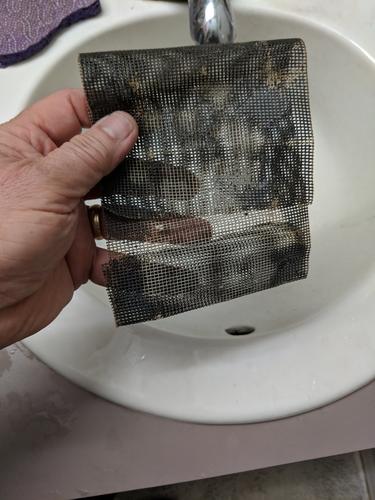
whatever you want to call it that's made for sanding drywall that I have used on bellied hones before I had a flattening stone. That didn't really seem to change its appearance much either although it did seem a little smoother... I think, unless it was just cleaner. I should mention that this thing is smoother to the touch and harder feeling than my 12k Sharpton. It's smooth like granite.
So then I decided to use my Norton flattening stone to try to lap it a little and I think it lapped my flattening stone.
Nothing really seemed to change the way it looked very much and it didn't seem to take anything off of it. I have no idea how hard that thing is but the flattening stone is silicon carbide so it has to be harder than that if I got my chemistry lesson right... doesn't it???
I did however take some pictures of it wet which seemed to enrich the colors some. With the water on it if you look at it with the light hitting it from a certain angle it has a sparkle to it, or rather IN it, on all four sides.
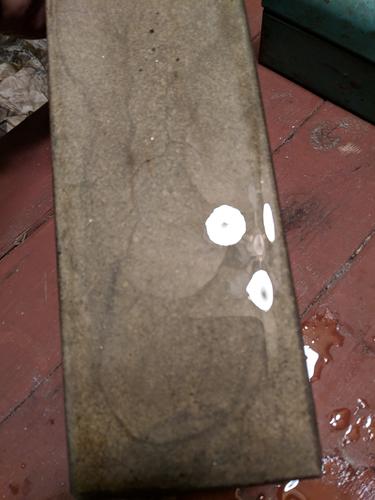
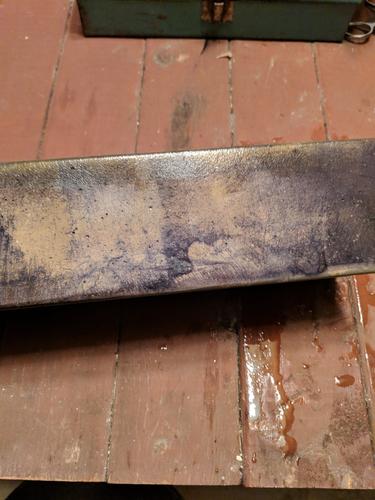
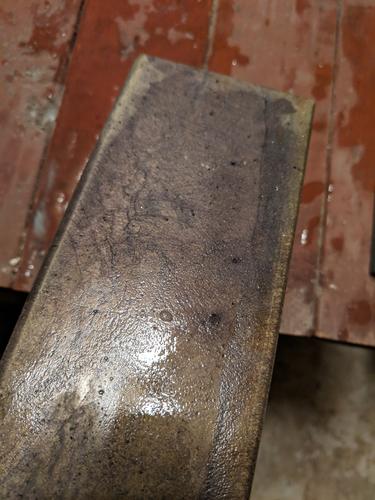
I don't know if you can see it from the pictures or not. I also don't know if you can see from the pictures or not but the sides have a striation to them like a trowel leaves on concrete. Somebody mentioned that maybe it's an "ark" which I assume means an Arkansas Stone (again disclaiming my ignorance). I'm pretty darn sure this is a man-made stone but, again... ignorance.
What's harder than silicon carbide, would that leave more than dimond? Certainly that can't be a daimond stone can it?

Hoping some of this means something to somebody. Meanwhile I'm still scratching my head here.
Paul
-
01-05-2019, 03:23 AM #10

AMENDMENT TO THE UPDATE:
I went back to look at this stone again after it had dried some and I noticed that it's sparkles even more now that it's not wet which I don't believe I ever noticed before. I turned the stone over and over looking at all the sides and noticed that the one cutting surface did not seem to sparkle like the other one. Now I can see that it's not actually sparkly on all four long sides but only on the one and spilling over onto the top part of the sides adjacent to it. Running my hand over it, I also noticed it (duller side) is nowhere near as smooth. It then occurred to me that I had only run the flattening stone over one side so again I sprayed it with the hose and ran the flattening stone over the other, duller side. On this side the slurry that came up was from the stone and it is a creamy tannish gray. Originally (on the other side) the slurry that came up was from the flattening stone and it was that same dull green. Lapping this duller side with the flattening stone left a much softer more opaque texture to it while the other side that had dried is barely even scratched where I had run the flattening stone over it. So apparently this hone has a honing side and a finishing side if I'm saying that right (once again disclaiming the ignorance). Doesn't it?
I sure hope this rings some bells to somebody because now I'm really intrigued by this thing and being that it belonged to my now late father I would really like to know more about it.
Thanks.
Paul
PS: a little dirty pool here: attaching a picture of my father fresh out of boot camp in early 1944. Figured maybe it would compel some people.



 37Likes
37Likes LinkBack URL
LinkBack URL About LinkBacks
About LinkBacks







 Reply With Quote
Reply With Quote

